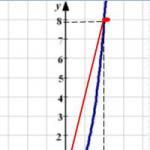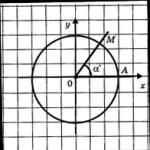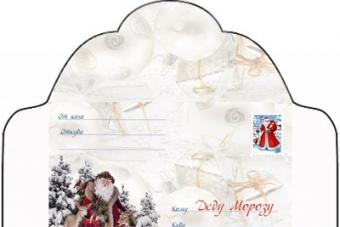Every second inhabitant of the country owns a car. The car allows you to move quickly, bring purchases, take children to Kindergarten. When you sit behind the wheel every day, even the thought does not arise that the car can harm.
With the increase in demand for cars, the annual rate of accidents on the roads is increasing. Pedestrians caught off guard are often the victims. Car manufacturers care not only about the safety of the driver, but also about those around them. It is for this reason that a prerequisite for the operation of vehicles on the road is the presence of a sound signal. Proper working condition of the horn is mandatory, even if it is necessary to drive 5-10 meters.
Often, drivers abuse the sound signals, standing idle in a traffic jam, when overtaking in a populated area, which is absolutely impossible to do. An audible signal in the city is necessary only as a last resort to prevent a traffic accident.
What are sound signals?
Sound signals can be roughly divided into two categories:
electromagnetic
The main working components of the electromagnetic design include an electromagnet connected to a membrane and a core. When the button is pressed, the core rod makes oscillatory movements, transferring them to the membrane, as a result of which we hear a powerful signal.
Electromagnetic beeps are of several types, depending on the mechanism of the sound emitter, they are divided into:
- Horns provide average sound quality, of all types of electromagnetic sound signals are considered the most simplified option. The design resembles a horn. Common today thanks to easy way installation under the hood and low cost.

- snails not the easiest to install due to their shape and size. The design has a curved socket, which must be installed with the pipe forward. They make a rather powerful sound that presses on the eardrums. Most often produced in two-tone, the design with a relay allows you to set a given melody.

- Disc horns (pancakes). Manufacturers produce collapsible and non-collapsible models, the latter of which take up less space during installation. Depending on the design (open or closed), the mounting method is selected under the hood or in plain sight. As a rule, there are no problems with installing disc horns. There are single-tone and two-tone models.

Pneumatic
The principle of operation is absolutely the same as that of the first signals installed on horse-drawn carts, steam transport. The operating elements of the structure are a pipe with a socket, a membrane, a chamber. The compressed air flow is directed to the membrane, the sound emitted by the membrane is amplified, passing through the pipe. The sound volume of pneumatic signals reaches 125 dB, and the frequency range covers several sound zones at once. Manufacturers produce models with a different number of horns, from one to five. However, to ensure the performance of such a "brass band" a powerful compressor is required. More horns provide a multi-tonal rich sound. The optional installation of a programmable relay with electronic valves allows you to set up an individual musical horn, unique in its sound.
It should be noted that the installation of musical signals on cars is prohibited. Therefore, it is advisable to use a musical horn on recreational or special purpose vehicles.
Installation and operation requirements

Before proceeding with the installation, it is necessary to correctly select the model, make sure that the dimensions of the horn will allow it to be mounted. Any car horn is sold complete with installation instructions, often the principle of installing all sound signals is similar. If you have ever seen how the sound signal is changed, then there should be no problems with self-replacement.
Following the instructions, the device must be connected to a current source, the flow of which is not complete without "mass". The device is attached to the "mass" exceeding it ten times and is at least 30 kg.
Also, before buying, check the compatibility of the battery with the purchased mechanism. That is, make sure that the battery can provide power to the audio signal. When combining several beeps, the battery will be discharged many times faster, since such models consume up to 25 A.
The voltage can also be different depending on the type of car, trucks - 24 V, cars - 12 V.
When replacing an outdated horn with a more powerful one, you need to make sure that the car is soundproofed enough, otherwise the driver will have to endure inconvenience along with people “overboard”.
Among other things, medical and GOST requirements are imposed on sound signals:
According to medical requirements, the sound device should not exceed a frequency of 440 Hz, a higher frequency is harmful to the health of others.
The car horn should not copy the sound of a law enforcement or ambulance signal. Naturally, the appearance of a car with a similar sound of a horn will make some confusion on the road.
According to GOST R 41.28-99 (UNECE Regulation N 28), the sound signal must emit a monotonous and continuous sound.
What malfunctions can be?

The most common cause of car horn breakdown is considered to be oxidation of contacts or complete oxidation of the entire mechanism.
The second most popular problem is a malfunction in an unreliable connection of contacts. Over time, the connections move away, or were initially loosely fixed.
The scheme for checking the sound signal in a car is always standard. First of all, it is necessary to remove the battery terminals, disconnect and discharge the airbag capacitor. Then the steering wheel cover is removed, this operation must be performed with a partner.
After all the manipulations, the very oxidized contacts are cleaned, the needle file will most effectively help with this. Contacts are re-fixed in their original position.
Summing up

Thus, we conclude that the best option would be to install a sound beep with a familiar sound, medium volume.
First of all, the sound signal is necessary to prevent an accident, it is used quite rarely. Experimenting with musical and powerful models can lead to not the most pleasant consequences. Choose a model based on requirements such as distance, volume, dimensions.
The most expensive should be considered pneumatic-type sound signals; when buying them, you will have to spend a lot of money, usually this price range is within 20-50 thousand rubles. Such is the price of uniqueness, but is it really necessary on Russian roads?
More affordable prices for snail/horns models. Their price is ten times lower, the sound volume is from 110 dB, which is more than enough to warn a pedestrian or a traffic participant. Much less problems with installation and maintenance.
There are many elements in cars that make both pedestrians and drivers feel safe, but the horn stands out most of all among other functions. Decades ago, the horn was created for practical purposes. Its variations consisted in different loudness of klaxons and tonality. The current car market can provide car enthusiasts with a wide range of sounds to help express their individuality.
A special sound signal is a way to express your own personality
The need for a horn upgrade comes with a long lifespan. By default, many modern cars have a quiet signal sound, in response to which some owners install components from Soviet models like the Volga on their cars. This is far from always justified - the way out of most situations is to reconfigure the device.
Types of horns for a car
Pneumatic signals
They work on the same principle as the old horns from the time of horse-drawn carts: the compressor supplies compressed air through a pipe, provoking vibrations. All copies are in the same price category, while differing in design. Most often this concerns the shape of the horn pipe.

Pneumatic signals can have a power of up to 125 dB, and their frequency range is located at several required levels at once. This is achieved by placing four "horns" (in some cases less). So, the lowest signal plays at a frequency of 320-415 Hz, and the highest sound can reach up to 810 Hz. To power this orchestra, the compressor needs a pressure of at least six atmospheres. In this case, the sound of the horn will form a real melody, but this requires programming the device and a lot of space under the hood.
Electromagnetic horns
In such equipment, the main element is an electric magnet, which is connected to the membrane. The breaker connects the current source to the core winding, and it, in turn, to ground using the signal button. Activation of the latter causes the core rod to perform oscillatory movements, which lead to the vibration of the membrane. These signals differ according to the sound emitter criterion.
Disc horns
They have the design of a collapsible or one-piece device. The second allows you to save a few centimeters of space. The type of execution allows you to install open and closed, respectively, in sight or under the bonnet. Standard signals are arranged in a similar way, which allows you to mount "pancakes" without much effort. The device can be two-tone, but single-tone ones are also configured by combination, resulting in the synthesis of a high-frequency signal (420–440 Hz) and a simple one (335–350 Hz).

This type is more difficult to install - the curved shape of the pipe and the larger size are to blame. Signal power - 118 dB, frequency - 510 Hz. These kind of gramophones are known for strong pressure on the eardrums. A two-tone "snail" may have a relay that supplies electricity alternately to each of the windings, allowing you to receive a melody.

Horns
Such emitters look like a straightened "snail". At the same price, they sound much worse.
Installation of a new beep according to GOST
The standards do not describe criteria for signal characteristics - only its absence as such is a violation. Only high-frequency emitters pass the test against the norm, and the main frequency must be constant and not change under various influences of electricity. A poorly chosen car horn can cause trouble on the road, annoying both the driver and pedestrians. It should be noted that sounds that imitate the sirens of official cars can lead to bad consequences.

The standard car signal frequency ranges from 320 to 440 Hz. This is due to medical requirements. When purchasing pneumatic radiators with several tones, choose one that does not interfere with yourself, or take care of increasing the sound insulation in the car. Make sure it is compatible with your desired device. Several signals cause a standard battery to drain rapidly, drawing up to 25 amps.
Attention should be paid to the space under the hood. Some signals with a protective grille can be installed outside, which cannot be said about "snails".
Signals have detailed installation instructions, but the basic principles are always the same: you will need to connect the car horn to the power source through a relay or breaker.

Mounting is a separate issue: the basic kit may not have the part that is required to fix it specifically to your car, so be prepared to buy a cable with good protection of the right length if a flat installation surface is too far from the battery.
Fixing a faulty car horn
The most common fault is contact oxidation. In some cases, the latter fall out or move away. In situations where the emitter does not work, start the inspection with .
Before working with electricity, be sure to remove the terminals from the battery! Disconnect and discharge the capacitor that is responsible for. Its contacts are most often located under the steering column.

Three pins are usually located near the hub, protected by plastic. Clean them with a file and fix them firmly in their original position. Here you may need the help of a friend when removing the casing.
Outcome
The sound of the horn is the main instrument of communication between the driver and the pedestrian. , because experiments in such a case can end very sadly. The installation instructions for each car horn describe the characteristics: volume level, frequency and distance of the device. Practical characteristics take precedence over tuning. When choosing an emitter, first of all pay attention to the level of safety and reliability, avoid experimental models.
For the safety of the pedestrian and the driver, there are many automotive elements, but today the sound signals are "a step above" the same type of alarm sirens, seat belts and other things. Previously, the horns could not boast of a great variety and on the road all the cars sounded almost in unison, you could only choose the volume of the horn and nothing more. Today the situation has changed and on the road you can stand out not only with unusual airbrushing, tuning and sound, but also by setting a musical signal on a car or even a “locomotive whistle”. Fortunately, there are no prohibitions and GOSTs on the volume or sound of such devices yet, with the exception of “quacks” for which traffic police officers can severely punish. Yes, there is no law on the non-use of special signals, but there is an unspoken rule that all experienced motorists adhere to.
If we talk about the varieties of signals, then there are many of them, we will consider only the main and most popular of them.
Types of car signals
Pneumatic (air) signals
The principle of operation of such beeps is reminiscent of the old "beeps" that were installed on horse-drawn carts and the first steam cars. Air moves from the compressor through a special tube, causing it to vibrate and make quite loud sounds. Such air signals for cars are quite expensive, regardless of the design and shape of the product.

Pneumatic type signals differ in the shape of the pipes and in the power of the emitted signal, which can reach up to 125 dB. At the same time, the frequency range of the device covers several necessary sound zones at once. To do this, the klaxon has several pipes that give out the upper sound up to 800 Hz, and the lower one within 400 Hz. True, to create such an "orchestra" you will need a fairly powerful compressor capable of providing a pressure of about 6-10 atmospheres. There are one-, two- and three-arm models. The more pipes there are in the horn, the richer the melody you will get, only in order to get a musical beep, you will need to additionally install a programmable relay with solenoid valves which will open and close according to the appropriate program.
There are also special compressors with multiple pneumatic outlets. A corresponding beep is connected to each of the outputs with a separate tube. Air is supplied to each outlet at a certain frequency and in a certain order, resulting in a melody.

But as mentioned above, it is forbidden to install musical signals on a car.
If we talk about the most powerful signals from pneumatic models, then foreign-made products are considered the loudest. From such horns, the sound travels up to several kilometers. This is especially convenient if you often drive at high speed on highways or work on a truck in an area where a careless mushroom picker or beast can jump out onto the road.
Today, there are several popular models of pneumatic devices on sale:
- Mitsuba SW53 worth about 28,000 rubles;
- Hadley KIT961 for 30,000 rubles.
There are cheaper models, but more often they are only a horn, and motorists have to buy the rest of the equipment. On average, an air compressor for such a horn will cost from 25,000 to 50,000 rubles.
Electromagnetic signals
The principle of operation of such a beep is an electromagnet, which is connected to the main element of the horn - the membrane. The core winding in this design is connected to an energy source (battery) using a breaker, and to the mass of the car through a conventional signal button. As soon as the driver presses it, the core rod starts to move, thereby causing the membrane to vibrate, as a result of which a rather powerful signal is heard on the car.
There are several types of electromagnetic horns, depending on the device of the sound emitter:
- Disc horns ("pancakes"). Usually produced in two configurations: collapsible and non-collapsible. The latter are slightly more compact and take up a couple of centimeters less space in the car. Also, disc horns can be open and closed, depending on the type of product, they are installed under the hood of a car or “in plain sight”. The installation of such beeps is very simple, while you can combine high-frequency car signals (up to 440 Hz) with ordinary monophonic signals (up to 350 Hz) yourself, or the device will be two-tone at once.

- Klaxons "snails". Such models are much more difficult to install. It's all about the curved shape of the bell and the condition that the open end of the pipe must necessarily look forward. In addition, such models are larger. The signal power on such devices is achieved on the order of 118 dB, at a frequency of 510 Hz. Snail horns allow you to get more than a loud signal on the car, while you will feel pressure on the eardrums. Horns "gramophones" are most often produced in two-tone, but you can additionally supply the product with a relay that will transfer voltage to both windings in turn, due to which the specified melody will be played.

- Klaxons "horns". The emitter in this case is a "straightened snail", outwardly resembling a forge or pipe. Such products have the worst sound, but it is much more convenient to install them under the hood.
If we talk about the cost of such models, then electric horns will cost much cheaper from 300 to 5,000 rubles. For instance:
- Waydong Hella WD1057C-065C for 1,400 rubles;
- Relay W1048 will cost about 2,700 rubles;
- Torino Air Horns for 5,200 rubles.
True, it is worth clarifying that in this case the signal will be more “dry”, regardless of the presence of a relay.
What to look out for
Although there are no requirements in GOST (except perhaps a fine for the lack of a signal), it is important to remember that high-frequency beeps are normalized, so make sure that the main frequency is unchanged. In addition, you should not choose horns that imitate a steam locomotive or other vehicles that a pedestrian or motorist in the oncoming lane simply does not expect to hear. Think about your health, as doctors do not recommend using signals with a frequency of more than 440 Hz. If you are planning to purchase a powerful multi-voiced horn, then do not forget to take care of high-quality sound insulation in the car. In addition, pay attention to the following nuances:
- Before buying, you should make sure that the battery of the vehicle will “pull” the selected horn. If you plan to combine several beeps, then the battery will be discharged very quickly, since such “toys” are voracious and consume about 20-25 A.
- When choosing a beep, check with the seller if you need to connect the horn to power or if you need to purchase a compressor (which can be included) to work.
- If you need more bass in a horn, then choose low-frequency models, and vice versa, high frequencies are better suited for thin sound. Both are used for polyphonic melody.
- Remember that the voltage is different in cars and trucks. For cars, it is 12 V, and for trucks - 24 V.
You can specify how many melodies the beep plays, as well as how many bells it has.
In custody
Summing up, we can say that the pneumatic signal will be the most powerful, but at the same time, such a purchase can hit your pocket hard, so it’s better to weigh the pros and cons before purchasing such an expensive “toy”. In countries such as India, car signals are pouring on the roads in an unceasing stream, but in our country it is not customary to “buzz” every 3 seconds, so, most likely, an expensive device will be used very rarely. If you want to save money, then the easiest option is to put a horn from another car, so you get a loud sound for less money. Although it's up to you to decide.
Powerful steamship whistle with your own hands. From various plumbing components you can collect interesting crafts. For example, a steamship whistle (typhon in English). Moreover, for the manufacture of a cool signal, you do not need to weld, solder or glue anything. We read about how to make a beep - typhon with our own hands and look below. The money spent will pay off with the result. It is impossible to buy such a beep anywhere - you can only make it yourself. The scheme of assembling a steamship whistle with your own hands is shown.
Accessories
The following items were purchased from the plumbing store:
1. Elbow 40 mm - 90° - 4 pieces;
2. Sink siphon included - 1 piece;
3. Transition 50 mm - 40 mm - 1 piece;
4. Elbow 110mm - 87° - 1 piece;
5. Transition 110 mm - 50 mm.
Siphon refinement
Before assembling the structure, it is necessary to refine the siphon, this refinement must be taken seriously. Strictly adhere to the proposed improvement scheme. The central pipe of the siphon needs to be shortened with your own hands so that it protrudes 1.5-2 mm above the plane of the outer pipe. On the ruler, mark the place of the cut and cut off the excess part with a metal saw. The place of the cut is carefully polished with emery skins with a decrease in the grain size. You should get a smooth, even surface - this is a must.
Inner tube Smoothed edgeDifficulties in manufacturing were caused by the method of attaching a sound membrane made of rubber. There are two implementation paths here. The first way is simple, attaching the membrane to the surface of the siphon without further modification of the latter. The second way is difficult, modify the siphon and install a protective cap over the membrane.
First way used in the construction of the device. If you stretch the rubber and hold it tightly along the outer case, you can blow into the side hole with your mouth and get a sound. So all available rubber materials were tested, the best effect was given by a piece of rubber from a torn swimming cap. There was no denser material at hand. The membrane for stationary use can be fixed with twine and electrical tape. The disadvantage of the first way is that part of the sound will be emitted outside bypassing the outlet pipe and the membrane may be damaged.
Second way. Various siphons and fastening methods were used, but a completely non-original method won. To avoid premature rupture of the membrane, the external thread on the siphon is cut off completely. The thread on the cap is covered with adhesive tape. Holes are cut in the cap itself, the size and number of holes affects the frequency and volume of the sound, and for denser rubber, the number of holes may be small. The cap without membrane must be freely removed from the siphon. See photo.
Thread cutThe pneumatic horn was the first signaling device on cars from the dawn of motor vehicles. Remember? “Balaganov pressed the pear, and old-fashioned, cheerful, suddenly breaking sounds escaped from the copper horn: “Matchish is a lovely dance, ta-ra-ta, matchish is a lovely dance, ta-ra-ta ...”.
Notes of matchish, an old Portuguese melody that became popular all over the world in the first decade of the 20th century, were issued by a hand-held pneumatic signal (apparently polyphonic, with several horns) on the famous "Antelope-Gnu" - Lauren-Dietrich by Adam Kozlevich from "The Golden Calf" by Ilf and Petrov...
Today, the pneumatic signal has ceased to be massive on cars, remaining as a regular factory unit mainly on trucks, and even then no longer for necessity, but from a design prank of development engineers. However, the technology gradually fading into the past gave rise to a peculiar and very curious hobby movement - lovers of super-powerful pneumatic horns on ordinary cars.
Applied Pneumatic Technologies
Actually, true "pneumatic signalers" recognize only real diesel typhons - powerful "horns" that can only be pumped with a good pressure of air under high pressure. For all sorts of Chinese chrome-plated pipes with pumps the size of a can of cola, offered by Chinese cellars, these guys do not exchange. Train Typhon - period! Russian production, and even better - American. Even one typhon will make the driver of the car that you blow on the road “lay bricks”! What if there are several of them?
But in order for the typhon to emit the longed-for roar of a wounded elephant, you must first prepare and mount the whole system. A locomotive pipe needs a high-intensity air flow - this will not be provided by any pump powered by a 12-volt on-board network, even the most powerful one, designed for wheels of SUVs and trucks.
The fact is that such a piston compressor gives high pressure at low productivity, but vice versa. Therefore, the pump is combined with a receiver - an intermediate air storage tank with a volume of 10 liters or more. After starting the engine, the auto pump fills the receiver through an electrovalve with a pressure regulator. The necessary atmospheres are pumped up - the system turns off the pump and the receiver stores the necessary supply of air under pressure. You need to signal - press the button, the working electric valve opens and lets the air flow into the pipe of the typhon.
The pneumatic system, installed in the American style, under the bottom of the SUV (no need to be afraid of moisture and dirt in sunny California!) - you can see a compressor, a receiver with a pressure gauge and a bleed valve, and four different-toned horns.
In general, an air horn with related components is a fairly simple thing. But installing it on a car is not an easy task ... In fact, in each case it is an individual work. Fasteners are made specifically in place, body elements are cut, if something does not fit, power wiring is pulled - after all, compressors are voracious and demanding on current! Barrel-shaped receivers from the general market are sometimes used. And often an individual air tank is brewed - figured to fit it into the niches of the car.
Your humble servant, the author of this article, used to put two half-meter Chinese pipes on Kia Rio- and, I must say, was transported almost the whole day! The system had to be distributed under the hood, for which, by welding, 3 individual brackets of a rather fancy shape were made from a steel strip with a section of 25x4 - one for each pipe and one more for electric compressors. And this is for a system that is trifling by the standards of true pneumosignalers, without a receiver and with poor membrane pumps! A serious system is an order of magnitude more laborious.
All this greatly limits the spread of truly powerful typhons on cars - people either do not have the qualifications and tools, or the funds for the services of installers, or it’s just scary to lose a guarantee due to such a noticeable intervention in the design of a car by official servicemen ...
Air horns in the USA
Manny, the owner of a well-known California air horn shop, spoke about the overseas community of lovers from the heart to “blow” the site.

shop owner
- Who is he - the average American buyer of pneumatic signals?
- This white man age 16 to 50, usually the owner of a large SUV or pickup truck. For the sake of appearances, they all say that they install pneumatic systems for safety, but, let's be honest - in fact, to have fun and scare unsuspecting people!
– What do your pneumatic signal laws say about installation and use?
- There are no laws specifically prohibiting pneumatic signals on cars. But most cities have their own ordinances controlling loud noise. It includes pneumatic signals, and a loud exhaust, and music, and the like. If you use pneumatic signals responsibly - that is, only to prevent a dangerous situation - you will not have any complaints. But for hooliganism with them, of course, they can attract!
– Is there a large market for pneumatic signal components?
– Since 2002, when we started working, it has only been growing. But in general, it is quite niche, there is no need to talk about mass character.
– The YouTube video does not fully reflect the volume of the beep. If a client comes to you who can’t decide what he needs, how do you act in such a situation?
– To do this, we have such a table-stand with pipes, a pump and a receiver. We roll it out into the yard and clearly demonstrate the superiority of the pneumatic horn over any other!
– How much did the most expensive system built with your components cost?
“The most expensive and powerful horn we have is the Nathan AirChime K5LA, it costs $1,849.99. This is a horn used on high-speed trains, it is very powerful and incredibly loud. A man built a system on two of these horns - he used large 10-gallon receivers, high-performance industrial compressors and a bunch of different switching components, and as a result, his system became the most expensive system we have ever sold - more than $4,000.

Air signalers in Russia
We also talked about the same site with Viktor, the owner of almost the only store in Russia selling components for giving a pneumatic voice to a car.

shop owner
– What cars do buyers of typhons and pumps come to you with?
- Most often these are large SUVs, but not uncommon - installation on budget sedans and VAZs. There are times when a pneumatic signal with components and installation costs almost as much as the car itself - people just want to give the car originality in such an extravagant way.
– Is there any practical aspect being pursued in the installation of the air horn?
– Based on the experience of communicating with people who created powerful alarm systems on typhons, it’s not customary for us to have fun, as in numerous videos about American owners of air horns in cars that intentionally scare people while having fun. In Russia, there is a danger for this and to get a brick in the glass ... Our people want to have more, according to the principle "to have" and "not like everyone else."
– Do you remember interesting episodes from the installation practice?
- I remember a client from somewhere in the north who purchased a set of pneumatic signals for a boat - to scare away bears along the banks of the river. There was another interesting case - a client arrived on a brand new one and wished to control the typhon manually - in the sense, not to connect the electrovalve parallel to the standard horn, as is usually done, but to signal with a manual valve, opening the air line from the receiver to the pipe. They put him a manual valve from the train - next to the gearshift handle; a person did not regret the interior of the cabin on a new car for the sake of the desire to feel like a driver to the fullest ...





